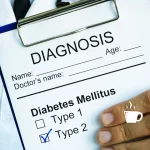Physical Address
304 North Cardinal St.
Dorchester Center, MA 02124

Anxiety attacks can emerge as uninvited intruders, disrupting life with their intense and frightening symptoms. They arrive without warning, casting a shadow of dread that can overwhelm the calmest of days. Understanding these formidable episodes is the first step toward reclaiming peace.
In this guide, “Surviving Anxiety Attacks: The Ultimate Guide to Regaining Control,” we’ll unveil the strategies to navigate through the storm of panic. You’ll learn to recognize the harbingers of an attack and the measures to counter its grip, setting the stage for a life led on your own terms, free from anxiety’s unpredictable grasp.

Anxiety attacks, clinically known as panic attacks, are intense periods of fear or extreme discomfort that can strike swiftly and without any prior indication. These episodes can feel like a sudden onslaught, overpowering the individual with a barrage of alarming physical and emotional symptoms. Understanding these events is crucial, as it can sometimes demystify the experience and reduce its power.
Triggers for anxiety attacks are as diverse as the individuals who experience them. While stress is a common catalyst, other factors such as life transitions, phobias, or even certain situations can prompt an attack. Sometimes, they may occur without any identifiable trigger, making them seem like random disruptions to one’s wellbeing.
The unpredictability of these triggers often adds to the anxiety itself, creating a feedback loop of apprehension and fear. This anticipation can exacerbate the situation, leading to heightened vigilance for the signs of an impending attack, which, in turn, can actually bring one on.
Acknowledging the varied triggers is a pivotal component of managing anxiety. By identifying and understanding what precipitates these attacks, individuals can begin to develop coping strategies tailored to their personal experiences. Such strategies can then be honed to defuse the impact of triggers or possibly avoid them altogether.

Recognizing the symptoms of an anxiety attack is essential for timely management and control. These symptoms often manifest suddenly and can range from mild to severe, painting a vivid picture of distress in the individual. The onset is typically marked by a racing heart, a signal that the body’s alarm system has been triggered.
Following the heart’s rapid tempo, breathing may become quick and shallow, a response known as hyperventilation. This can lead to a cascade of symptoms, including lightheadedness, tingling in the hands and feet, and a sense of suffocation. The physical sensations are often accompanied by an intense fear of losing control or a dread of impending doom, despite the lack of actual danger.
For some, the symptoms might include gastrointestinal discomfort, a feeling of detachment from reality, or even a fear of death. These intense physical and emotional experiences can make an anxiety attack not only uncomfortable but also deeply frightening.
Understanding these symptoms is a powerful step towards empowerment. When one can anticipate the waves of an attack, they can also prepare to ride them out with techniques and strategies designed to restore calm. Knowledge of one’s own symptom pattern paves the way for implementing personal coping mechanisms that can lessen the severity and duration of an anxiety attack.

During an anxiety attack, immediate action can help mitigate its intensity and duration. The first critical step is to focus on breathing; slow, deep breaths can act as an anchor, calming the nervous system. This technique counters hyperventilation by encouraging a steady intake of oxygen and a calming exhale of tension.
Another immediate step is grounding oneself in the present moment. This can be achieved by engaging the senses – touching something textured, savoring a flavor, or listening to a specific sound. Such sensory focus can divert attention from the panic and provide a mental refuge from overwhelming thoughts.
For many, mindfulness is a powerful tool in the throes of anxiety. It involves a conscious effort to observe thoughts and feelings without judgment, accepting their presence but not their control. By acknowledging thoughts as mere mental events, individuals can reduce their impact.
Lastly, simple yet effective strategies such as repeating a calming mantra or visualizing a peaceful scene can offer solace during an attack. This creates a mental oasis, a place of safety and calm that the mind can retreat to when the waves of anxiety crash too fiercely. These immediate steps can be a lifeline, offering control when it seems most elusive.

Long-term strategies play a vital role in reducing the occurrence and severity of anxiety attacks. Consistent self-care routines, including regular physical exercise, have been shown to alleviate symptoms of anxiety by releasing endorphins, natural mood lifters. Engaging in activities such as walking, jogging, or yoga can provide a dual benefit of distraction and physiological calm.
Nutrition also holds a key to managing anxiety. A diet rich in whole foods like vegetables, fruits, whole grains, and lean proteins can stabilize blood sugar levels, which in turn can influence mood stability. Limiting intake of caffeine and alcohol, known to exacerbate anxiety symptoms, is also beneficial. Balanced meals can fortify the body’s resilience against stress.
Adequate sleep is another cornerstone of long-term anxiety management. Anxiety can often disrupt sleep patterns, but establishing a regular, calming bedtime routine and creating a restful environment can enhance sleep quality. Sleep rejuvenates the mind and body, equipping them to better cope with stress.
Professional therapies, such as cognitive-behavioral therapy (CBT), provide tools to change negative thought patterns that fuel anxiety. For some, medication may be a necessary adjunct to therapy, offering chemical balance when lifestyle changes alone are insufficient. Under professional guidance, these strategies can forge a path to a life less encumbered by anxiety.

Support from others can be an invaluable resource in the journey to manage anxiety. Knowing that one is not alone in their struggle can provide comfort and a sense of shared humanity. Friends and family can serve as a compassionate sounding board, offering a space to voice fears without judgment.
In moments when anxiety feels insurmountable, the simple act of reaching out can be therapeutic. Discussing one’s experiences with trusted individuals can not only lighten the emotional load but also help in gaining new perspectives. Such exchanges often lead to discovering commonalities, reminding those affected that they are part of a community.
Support groups, whether in person or online, are another avenue for connection. They provide a platform to meet others who face similar challenges, fostering an environment of mutual understanding and encouragement. Within these circles, individuals can exchange coping strategies and celebrate each other’s progress, reinforcing positive steps towards managing anxiety.
Therapeutic relationships also offer a professional level of support. Therapists can listen with empathy and expertise, guiding individuals through tailored treatment plans. They act as allies in the process, encouraging self-discovery and growth beyond the confines of anxiety. The synergy between personal support networks and professional guidance can create a powerful scaffold for healing.

Seeking professional help is a critical step when anxiety attacks become a disruptive force in one’s life. Recognizing when to seek this help is key, and it is often indicated when attacks are frequent, intense, and hinder one’s daily functioning. Mental health professionals can provide a level of intervention that friends or self-help strategies alone cannot offer.
Therapists and psychologists specialize in understanding the complexities of anxiety disorders. They employ evidence-based practices such as cognitive-behavioral therapy (CBT), which has been shown to be particularly effective in treating anxiety. This form of therapy works by identifying and challenging negative thought patterns and behaviors, equipping individuals with the skills to manage their anxiety more effectively.
For some, medication may be an appropriate course of action to manage the physiological aspects of anxiety. Psychiatrists can prescribe and manage medications that balance the brain’s chemistry, often leading to significant improvements. It’s essential, however, to approach medication as part of a comprehensive treatment plan that includes therapy and lifestyle modifications.
Finally, it’s important to remember that seeking help is a sign of strength, not weakness. Admitting the need for assistance is the first step toward recovery, and professional support can pave the way to a more stable, anxiety-free life. With proper help, the grip of anxiety can be loosened, allowing individuals to reclaim their sense of freedom and wellbeing.

Creating an anxiety attack action plan is a proactive approach to managing anxiety, providing a sense of preparedness and control. This plan should begin with a comprehensive list of known triggers. By documenting what precipitates anxiety attacks, individuals can better anticipate and avoid these situations, or approach them with caution and preparedness.
The action plan should also detail the symptoms that herald the onset of an attack. Recognizing these early signs enables the individual to implement coping strategies before the anxiety escalates. Whether it’s deep breathing, mindfulness, or a specific grounding technique, knowing what works personally is crucial.
Including a list of immediate coping strategies in the action plan ensures that effective measures are at hand when needed. These strategies could range from relaxation exercises to contacting a trusted friend or family member for support. The plan should be easily accessible, perhaps kept on a mobile device or in a small card in one’s wallet.
Finally, the action plan should outline steps for seeking further help if the initial coping strategies do not alleviate the attack. This could include the contact information of a mental health professional or a hotline number. Having a structured plan not only mitigates the impact of an anxiety attack but also empowers the individual to act decisively, reducing feelings of helplessness and fear.

Understanding and tackling the root causes of anxiety enriches the journey towards managing it effectively. Engaging in self-reflection, seeking therapy, and possibly maintaining a journal can unveil deep-seated triggers and patterns. Such introspection fosters a robust self-awareness that equips individuals with the tools to confront and mitigate their anxiety more adeptly.
Incorporating holistic wellness practices like meditation, yoga, and mindfulness into daily routines establishes a solid foundation of mental tranquility and resilience. These methods not only help in preempting anxiety attacks but also contribute to a broader sense of well-being. For more comprehensive strategies on managing anxiety, [click here].




